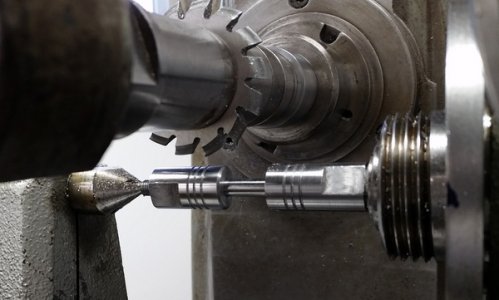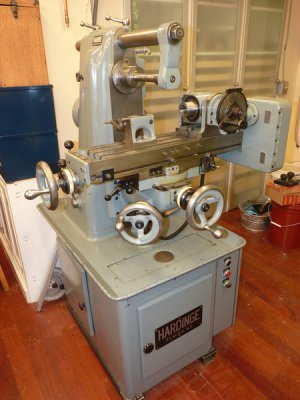- Joined
- Jan 29, 2014
- Messages
- 156
I am setting up my Dividing Head to cut some gears and something does not make sense.

This does not make sense to me. I would think that I would want the work being pushed into the dividing head. Particularly when I am making cuts that cannot be supported by a tail stock.
What also does not make sense is that because the cutter must fit between the dividing head and the work piece the arbor holding the work must be longer. And a longer arbor, in my mind, is not as rigid as a short arbor.
So something does not add up.
Do I need to reverse the direction of my cutter?
Do I need to turn my dividing head upside down?
Or is it actually better to have a longer arbor and have the cutting force pull the work out of the dividing head?

- The arbors for the Hardinge mill do not have a key way cut into them. So I believe they did not intend for me to secure the cutter with a key.
- There is a left hand nut on the arbor. This tells me that it is designed to run clockwise, so that when the cutter encounters the work it will tighten the arbor nut and not loosen it.
- As I am cutting the entire depth of the tooth in a single pass, the cut is too deep to recommend a climbing cut. So the cutter will travel from the right side of the work to the left side as it is making the cut.
- The dividing head is designed to be on the right side of the table. I could rotate the head 180 degrees, but then the oil reservoir would be on the top and the oilers on the bottom. I do not think this is how it is supposed to work.
This does not make sense to me. I would think that I would want the work being pushed into the dividing head. Particularly when I am making cuts that cannot be supported by a tail stock.
What also does not make sense is that because the cutter must fit between the dividing head and the work piece the arbor holding the work must be longer. And a longer arbor, in my mind, is not as rigid as a short arbor.
So something does not add up.
Do I need to reverse the direction of my cutter?
Do I need to turn my dividing head upside down?
Or is it actually better to have a longer arbor and have the cutting force pull the work out of the dividing head?



